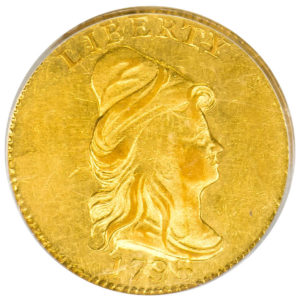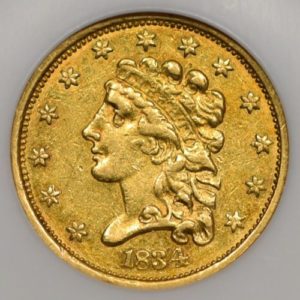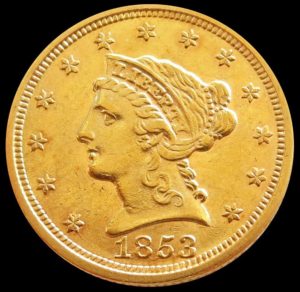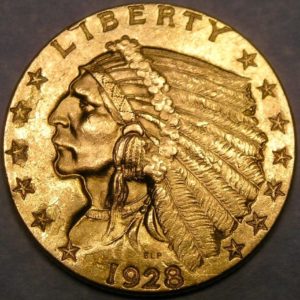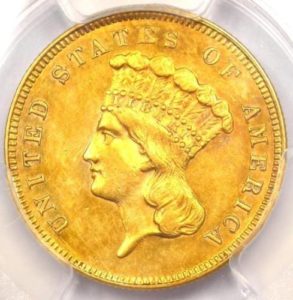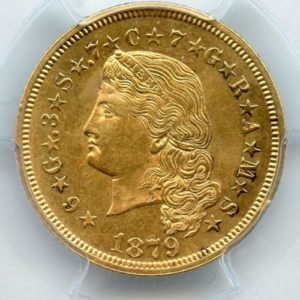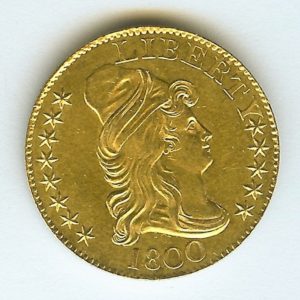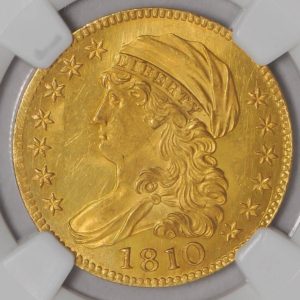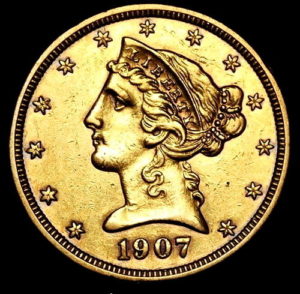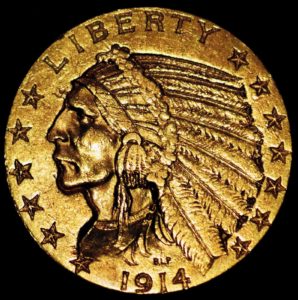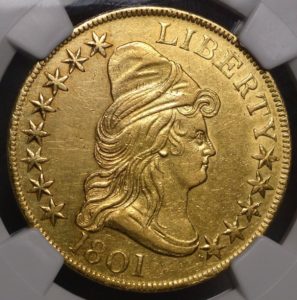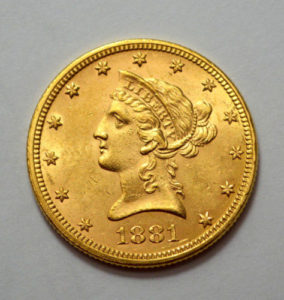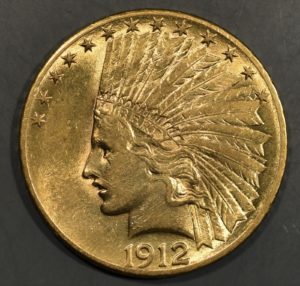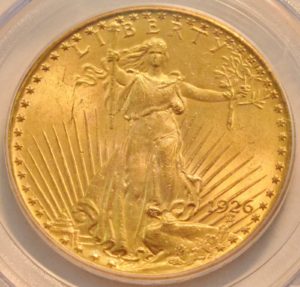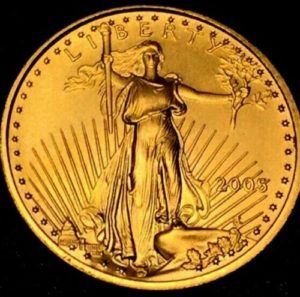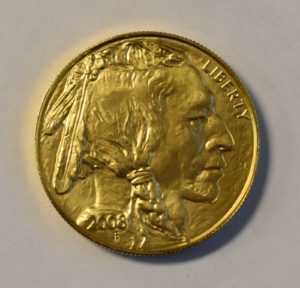Below are the Most Commonly Sought After Gold Coins. Follow the Links for Coin Overviews and Links to Price Guides.
Gold Dollar (1849-1889)
The gold dollar, historically known as been the smallest coin in the U.S., may be tiny in size, but it’s certainly made a significant stamp on collectors for its worth and rarity. Produced in Georgia and the Carolinas, the gold dollar was the result of two huge gold rushes, the first one taking place in the 1800’s. Impacting positively from the gold rush, two branch Mints were established in North Carolina and Georgia. This led to a distinctive increase in the Government producing gold coins…READ MORE
Draped Bust Quarter Eagle $2.50 (1796-1807)
Early Quarter Eagles – Draped Bust and Capped Bust Gold $2.50 Quarter Eagles (1796-1834). The 1796 Draped Bust was the first quarter eagle and was designed by Chief Engraver Robert Scot. It depicts a figure of Lady Liberty wearing a cap with the inscription of ‘LIBERTY’ above and the date below. On the reverse side of the coin is the traditional American eagle surrounded by stars and ‘UNITED STATES OF AMERICA’…READ MORE
Capped Bust Quarter Eagle $2.50 (1808-1834)
Early Quarter Eagles – Draped Bust and Capped Bust Gold $2.50 Quarter Eagles (1796-1834). The 1796 Draped Bust was the first quarter eagle and was designed by Chief Engraver Robert Scot. It depicts a figure of Lady Liberty wearing a cap with the inscription of ‘LIBERTY’ above and the date below. On the reverse side of the coin is the traditional American eagle surrounded by stars and ‘UNITED STATES OF AMERICA’…READ MORE
Classic Head Quarter Eagle $2.50 (1834-1839)
In the 1830’s, there was a serious crisis with America’s gold coin circulation. A short while after US Congress established an official ratio for bimetallic coins at ratio of 15:1 silver to gold, the price of gold steadily raised all over the world. As a result, speculators would buy up American coins and export them to the European nations, netting huge profits. These coins were often melted down in Europe to increase the wealth and spending power of the purchasers…READ MORE
Liberty Head Quarter Eagle $2.50 (1840-1907)
Starting in 1934, the US government tried to find a suitable design for their gold coins. Then, in 1838, Christian Gobrecht’s Coronet created a design for the Gold Quarter Eagle which was to remain and be used starting in 1840 all the way to 1907. The coin features a figure of Liberty on the front and wearing a coronet on which…READ MORE
Indian Head Quarter Eagle $2.50 (1908-1929)
When the 20th century began, the design for the four gold coins that were then being made by the US government had been the same for fifty years. Many felt that this was a sign of a need for change and improvement. In 1901, Theodore Roosevelt agreed. Ever a proponent of and strong trigger for change, Roosevelt believed that an update to the gold coins of the US were far past due…READ MORE
Three Dollar Gold $3 (1854-1889)
The Gadsden Purchase of 1853, unbeknowingly to all involved, set the scene for the Three Dollar Gold $3 of 1854. Due to its expanding borders and increasingly spread-out and sophisticated trading system, there was a demand for a universal and standard rate for US postage stamps. Congress ultimately made this demand a reality in 1854. As a result of this new system, the US government decided to create a three dollar gold coin in order to speed up…READ MORE
Gold Four Dollar Stella $4 (1879-1880)
At the beginning of the 19th century, America was a country filled to the brim with expansionist and global sentiments. Toward the second half of the century, now securing its borders, this sentiment shifted its focus to international trade. This brought the burgeoning democracy into what was at the time something of a global crisis in trade: too many competing coins. By 1867 there was a widespread demand for a single world coin standard and it was in this year that twenty…READ MORE
Draped Bust Half Eagle $5 (1795-1807)
In American coinage, the half eagles or $5 pieces include some of the greatest rarities, with 1822 $5 being particularly famous. The denomination was produced intermittently from 1795 to 1929. But the initial series that was later known as the Draped Bust Half Eagles continued to be minted until 1807 in two different subtypes. Those were the Draped Bust, Small Eagle (1795-1798) and Draped Bust, Heraldic Eagle (1795-1807)…READ MORE
Capped Bust Half Eagle $5 (1807-1834)
Also known as Capped Bust to Left, the Capped Bust Half Eagle is the second series of gold coins in $5 denomination within the United States. Produced from 1807 to 1834, it can be distinguished by a common reverse design and two different obverse designs. With the exception of 1816 and 1817, the coins were struck for circulation for each year…READ MORE
Classic Head Half Eagle $5 (1834-1838)
Excited about getting new gold coins into circulation, US Mint Director Samuel Moore asked Engraver William Kneass to create a new design. Kneass settled for a Liberty with tousled hair and facing her left. She had a headband with the words LIBERTY inscribed on it. The date was placed below the head, which was circled by 13 stars…READ MORE
Liberty Head Half Eagle $5 (1839-1908)
The US half eagle gold coin went through several designs throughout its run. Robert Scot’s design kicked off the series in 1795. It was followed by the Draped Bust design by John Reich in 1807. The Classic Head design by William Kneass was released in 1834, which was then replaced by Christian Gobrecht’s Liberty Head design in 1839. A final type, the Indian Head by Bela Lyon Pratt, was produced in 1908 and ended in 1929 with a break in production during the First World War…READ MORE
Indian Head Half Eagle $5 (1908-1929)
Theodore Roosevelt, who served as US president from 1901 to 1909, welcomed new ideas. He was interested in many areas concerning the nation, including coinage design. Roosevelt asked Augustus Saint-Gaudens, the foremost sculptor at the time, to redesign the double eagle and the eagle. The new designs debuted in 1907 to great reviews, and on the heels of that success, Roosevelt sought on…READ MORE
Draped Bust Eagle $10 (1795-1804)
During the 18th century, Americans were only familiar with the Spanish Coins when talking about the United States’ monetary systems after the Revolutionary War. In a bid to strike a balance between the old and new, the architects of the monetary system formulated a plan to do just that. This resulted in a new coinage scheme for the $10 piece that was the country’s premier gold coin. Because it was intended to be America’s face to the world by the Congress Mint Act of 1792, the “eagle” was symbolically added, which is the US’ national bird…READ MORE
Liberty Head Eagle $10 (1838-1907)
The $10 Liberty Head Gold Eagle is reminiscent of a time when the monetary system was based on denominations of the metal value attached to them. As a result, the US followed in line with European practices in governing their monies by which precious metal they were made of. The ‘Eagle’ was a gold coin and was considered a standard denomination of such right…READ MORE
Indian Head Eagle $10 (1907-1933)
Artistic and U.S. coinage were two words that hardly ever appeared in the same sentence. It was an image President Theodore Roosevelt was determined to change with his sweeping coinage design legislation. One of the first examples produced from this change was the $10 Indian Head Gold Eagle designed by Augustus Saint-Gaudens and produced from 1907 to…READ MORE
Liberty Head Double Eagle $20 (1849-1907)
Also known as the Coronet double eagle, the American twenty-dollar gold piece was used in 1849 as a pattern coin and from 1850 to 1907 for commerce. It owes its design from the mind of James B. Longacre, the then Chief Engraver of Mint of the United States. Along with the gold dollar, the double eagle was a direct result of the Congress considering new denominations of gold coinage…READ MORE
St. Gaudens Double Eagle $20 (1907-1933)
Gold coins signify opulence, and with good reason. Gold is perhaps one of the most easily recognized precious metals. Long before the age of credit cards or even paper currency, it was gold that symbolized wealth. In the early 1900’s, President Theodore Roosevelt inquired of sculptor…READ MORE
Modern American Gold Eagle (1986 to Date)
Among the modern US Mint issues, the gold bullion is one of the most popular – especially American Gold Eagles. Although 1986 was the inaugural year, the sale of the coins did not start until October of the same year. Still, the annual total for that year was the highest on record and remained the same until 1998. The bullion coins are offered in different sizes–1 oz, 1/2 oz, 1/4 oz, and 1/10 oz…READ MORE
Modern Gold Buffalo (2006 to Date)
One is made of 24-karat gold while the other looks like a medallion, but both are gold coins that have been produced in the US. The American Buffalo or gold buffalo has been produced each year since 2006 while the gold high reliefs have been minted twice: 2009 and 2015…READ MORE


